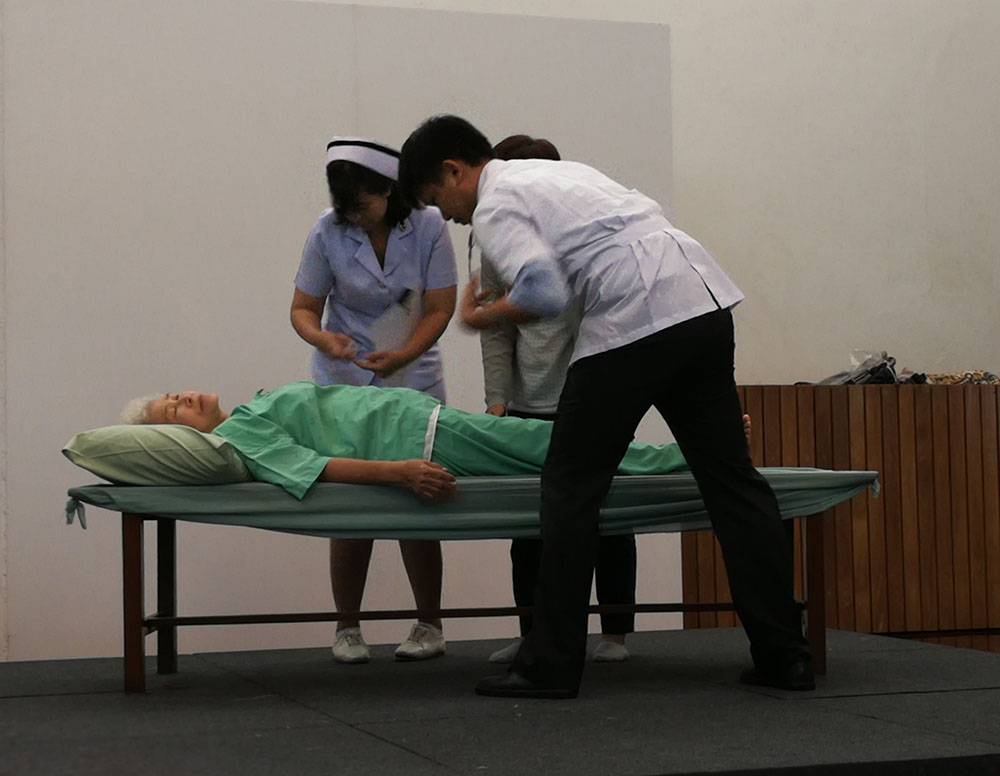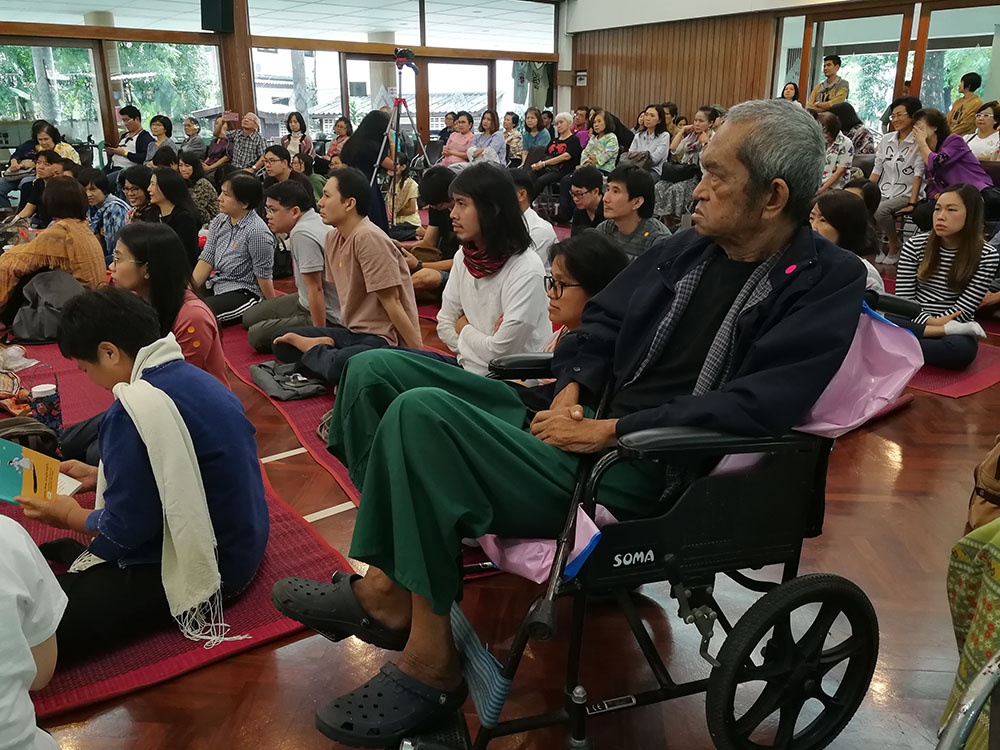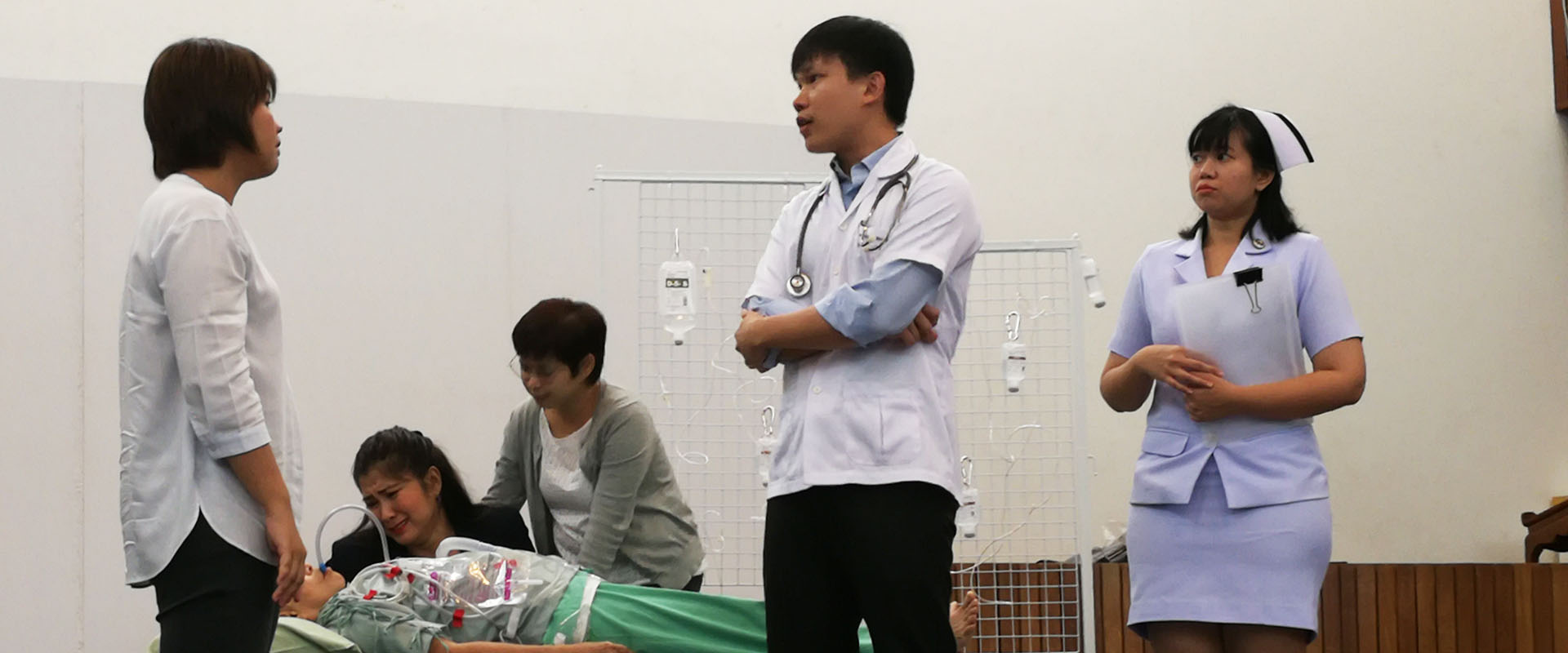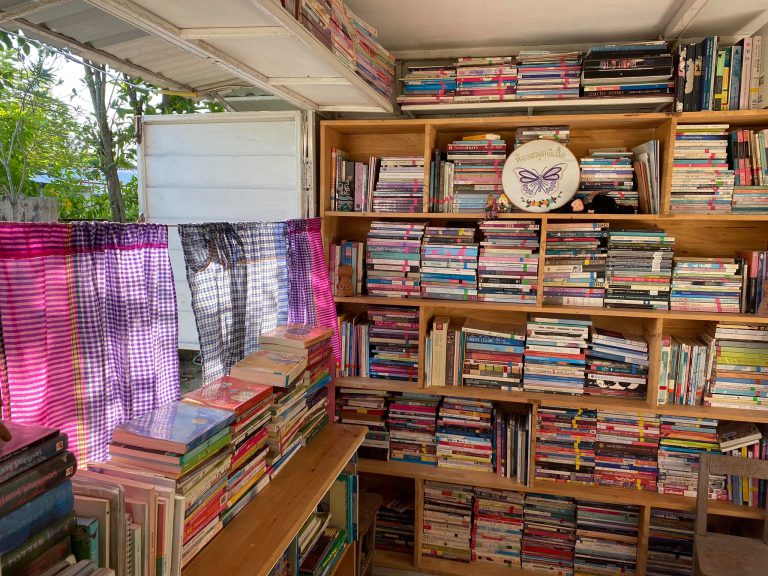Story: Patwajee Srisuwan
Death is a taboo, bringing it up in daily conversation is difficult. The majority of people learn of pain and death through novels or post-news tv series, which for the most part are based on beliefs that have been passed on through the generations. However, when those beliefs are applied to reality, they aren’t appropriate for the situation or context of different families.
Forum Theatre is a form of improvised theatre in which audience members can become actors and change the narrative of a play according to their own whims, by drawing on their personal lived experiences. This is an effective tool for creating a feeling of collective participation and learning among the audience.
“Mommy won’t eat! Mommy wants to die!” The mother screams her refusal of the healthy food prepared by her daughter “Oom”, whose primary role as the caring and dutiful caregiver for her chronically-ill mother leaves her barely any time to look after herself, her husband, and their child. However, when “Je Daeng”, the eldest daughter who lives away from home, comes to visit, the mother is all smiles and good-tempered — as the saying goes, “love those who are far away, bored of the ones that are close by”… and that is the opening scene of “Let Me Look into My Mother’s Heart”.
Cut to the final scene…
“What happened to my mom? She said that she didn’t want a breathing tube! Who ordered this? Where is the doctor? The doctor has to be held responsible for this!” Muay Lek’s piercing screams echo throughout the room. She is the youngest daughter of the family and has flown back from America to “check in on her mom’s heart”; she finds her mother attached to a breathing tube, unable to communicate or say goodbye. When she went to talk to her mother’s doctor, the response she received was: “I followed the protocol. The consent form was signed”.
Every scene in the play contained stories that hit close to home and stirred up feelings in the audience of around a hundred people. From Oom, the daughter with the burden of caring for their ill mother that is fracturing her family, to Je Daeng, the charismatic eldest daughter that tells everyone to prioritize their own beliefs and desires who ultimately decides to attach her mother to a breathing tube in disregard of her mother’s express wishes when conscious. The father who leaves, starts a new family, later learns of his ex-wife’s illness and lectures his children on taking good care of their mother’s happiness. The doctor that simply requires a consent form in order to follow treatment protocol to his best capacity. Finally, the distress of Muay Lek, the youngest daughter who can not stand seeing her mother turned into a “living corpse”, clashes with the doctor, who asserts that he acted correctly, in accordance with medical protocol.

… Every scene feels authentic because they are all based on the real experiences of the ten lives that are performing on stage.
Forum Theatre… From Spectators to Performers
“Let Me Look into My Mother’s Heart” was produced by the Malongdu theatre collective that derives their name from the phrase ‘ma long du’ (‘come and take a look/try it out’). It is a piece of forum theatre, a new form of theatre that invites me to: “critically reflect” on solutions to the issues presented by the play, “get up and act” with the cast in our exploration of real problems embedded in Thai society and “attempt to resolve” them so the audience learns the extent to which their thoughts and intentions can translate into reality.
In other words, the intention of this play was to provoke the audience into becoming “doers that think critically” rather than “critics that do not act”.
The hallmark of forum theatre is the transformation of spectators into actors: at first, the play is performed once through from start to finish; then the play is staged again, this time divided into short scenes. If an audience member wants to participate in a scene, they raise their hand, step onto the stage and perform the role they have created for themselves. Once the second performance ends, actors and participants reflect on whether they liked how their different roles in the performance were influenced, whether the changes were constructive, and why.
The constantly evolving narrative is always fresh, and brings out new perspectives and opportunities to learn.
In the final scene, as the doctor and the patient’s relatives argue with one another, a small and lithe audience member raises her hand and steps onto the stage. She asks to perform the role of a doctor that provides the relatives information and access to possible alternatives, and speaks of “unlocking” what was done in the past.
“Most people think that once someone has a breathing tube, it can’t be removed, but actually it can be taken out without causing the patient discomfort, breaking the law or going against medical ethics. Usually, doctors and nurses will not leap to making a decision on behalf of the family because weighing the benefits is a complicated matter. We decide through a family meeting. Once we find that everyone’s aim is to allow the patient to pass away peacefully, the doctor can facilitate that through palliative care — removing the breathing tube and giving the patient drugs that will help them pass away without discomfort”. The audience member assumes the role of doctor with compelling confidence; for she is Dr. Chantana Mokcharoenpong from The National Cancer Foundation, who has advised and cared for end-stage cancer patients for many years.

Turning One’s Gaze from the Play Towards Oneself
“My daughter brought me [to the play]. It was pretty good; I was very impressed. I have kidney disease and am on dialysis. I came here straight after finishing a dialysis session. My plan for my life from now onwards is to be at peace. Birth, old age, sickness and death are ordinary things. I don’t want a breathing tube. If I’m about to go out then let me go; I’ll suffer a little. I think a breathing tube would be more painful,” says Wichian Chotiboriboon, and elderly man who came to the play in a wheelchair accompanied by his daughter, and intently watched the performance from start to finish.
His daughter, Sinee Chotiboriboon, shares that many of the events in the play mirrored her own life. Just like Oom, who cares for her mother, Sinee looks after her father, who lived in the provinces before permanently relocating to Bangkok for treatment.
“After watching the play, I see that I can solve my problems. I might have to change the way I think about caregiving, or I might ask other people for help… just as Oom does,” she says.
“I used to think that a breathing tube causes more suffering, and once it’s in it can’t be removed. After today, I understand that a breathing tube may sometimes be necessary, as in the play, and when the moment comes when you have to decide whether to keep the breathing tube or not, the doctor will have a way out. It’s given me more clarity, otherwise I would still be stuck in the mindset of refusing the breathing tube. I wouldn’t be flexible, or be really uncomfortable if a breathing tube becomes necessary”.
If this play was created to draw audiences into critically thinking and learning about patient care and dying, then it has masterfully achieved its goal. Forum theatre, in which people take turns performing characters filtered through an understanding and perspective derived from the context of their life to create a direct experience that is “real” and “fresh”, is a powerful learning tool that can be used to build communities engaged in the exploration of life and death.
Note: “Let Me Look into Mother’s Heart” is a collaboration between the Malondu Theatre Collective, Sahadhammikchon Foundation and the I SEE U Contemplative Care volunteering group. It was performed at I SEE U Contemplative Care Day #1 on 15/09/2018



